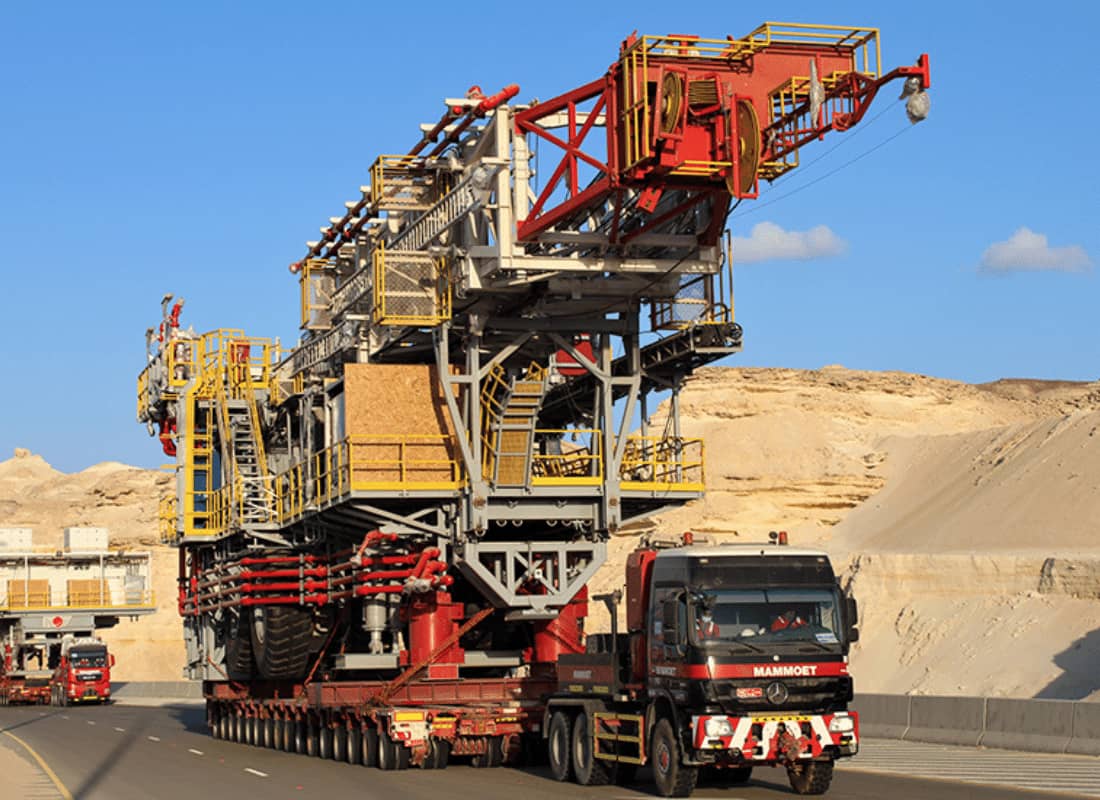
Transporting an onshore drilling rig involves complex logistics and strict adherence to safety, regulatory, and operational standards. Below are key guidelines to ensure safe and efficient transportation:
Route Survey: Assess road conditions, bridge capacities, overhead clearance, and terrain to avoid obstacles.
Permits & Regulations: Obtain necessary permits from local and national authorities, complying with weight, height, and width restrictions.
Weather Conditions: Avoid transportation during extreme weather (heavy rain, snow, high winds) to prevent delays or accidents.
Modular Breakdown: Disassemble the rig into transportable components (mast, substructure, mud pumps, etc.).
Weight Distribution: Ensure proper load balancing to meet axle weight limits and prevent road damage.
Securing Components: Use chains, straps, and braces to prevent shifting during transit.
Specialized Trailers: Use heavy-duty trailers (e.g., multi-axle lowboys) suitable for oversized loads.
Escort Vehicles: Deploy pilot cars or police escorts for wide or heavy loads to ensure safe passage.
Safety Signage: Display “Oversized Load” signs, flashing lights, and reflective markings for visibility.
Speed Limits: Follow reduced speed limits for heavy/haul transport.
Inspections: Conduct pre- and post-transport checks for mechanical integrity and load security.
Emergency Protocols: Prepare for breakdowns or accidents with response plans and communication tools.
Ground Stability: Ensure the drilling site can support rig weight and operations.
Crane & Lifting Equipment: Use certified cranes for reassembly, following manufacturer guidelines.
Minimize Disruption: Schedule moves during low-traffic hours to reduce public impact.
Environmental Protection: Avoid spills (fuel, lubricants) and comply with ecological regulations.
By following these guidelines, companies can ensure safe, compliant, and efficient onshore drilling rig transportation while minimizing risks and delays.
Onshore Rig Move Plan – Table of Content
1. Rig move preparation
Location survey
Road Survey
Preparation of advanced loads
Administration (Rig move plan)
Equipment Inspection
2. Preparation of new location and camp
3. Logistics
Number of Cranes
Number of truck loads
Lowboy truck loads
4. Load dimensions and weight
Description of loads in their sequence
List of wide loads for convoy
5. Rig move descriptions
5.1 Preparation
5.2 Pre-move loads
5.3 Rig release
5.4 Move safety meeting
5.5 Line of responsibility
Chart of responsibility
Job Descriptions
5.6 Daily move plan
5.7 Lower/ Raise mast procedures
5.8 Re-assembly substructure
6. Rig checklist
Lowering Derrick
Raising Derrick
7. Critical lifts
8. Lay-outs
Rig Lay out
Camp Lay-out rig site
Camp Lay-out
9. Pre-spud inspection
10. Daily move report
11. Rig drawing
12. Medivac procedures
Ambulance Drill
Notification chart
Emergency Instructions
User comments